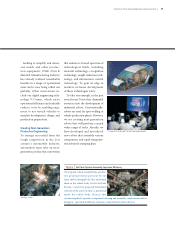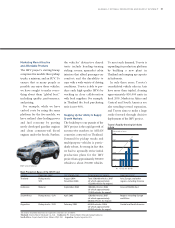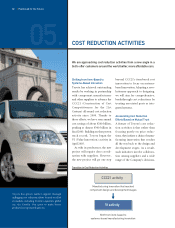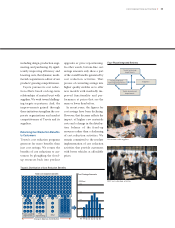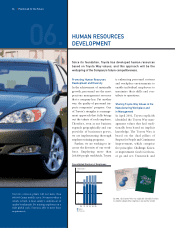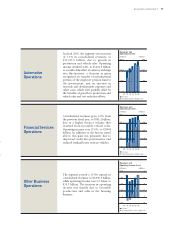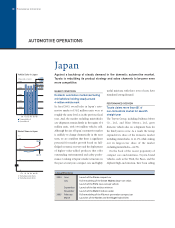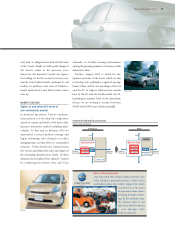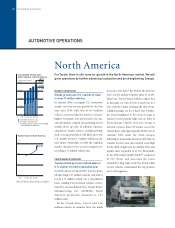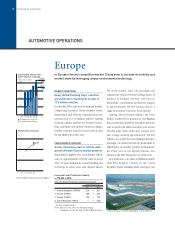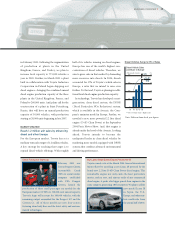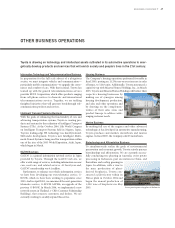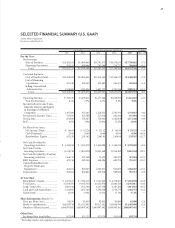Toyota 2005 Annual Report Download - page 41
Download and view the complete annual report
Please find page 41 of the 2005 Toyota annual report below. You can navigate through the pages in the report by either clicking on the pages listed below, or by using the keyword search tool below to find specific information within the annual report.
well. And, we shipped more than 100,000 units
of the Crown, thanks to a full model change of
the luxury sedan in the previous year.
Moreover, the mainstay Corolla was Japan’s
best-selling car for the second successive year,
and the Prius hybrid vehicle continued to sell
briskly. In addition, unit sales of Daihatsu-
brand minivehicles and Hino-brand trucks
were up.
MARKET STRATEGY
Stake out and retain 45% share of
non-minivehicle market
In domestic operations, Toyota’s medium-
term mission is to develop the competitive
muscle to capture and hold a 45% share of the
Japanese automotive market excluding mini-
vehicles. To that end, in February 2003 we
announced a revised product strategy and
began reforming sales channels to reflect
changing times. In May 2004, we consolidated
domestic, Toyota-brand sales channels from
five to four and defined the roles and targets of
the remaining channels more clearly. Of those
channels, the revitalized Netz channel—created
by combining the former Netz and Vista
channels—is steadily earning endorsement
among the growing numbers of customers with
distinctive values.
Further, August 2005 is slated for the
Japanese premiere of the Lexus, which we aim
to develop into a globally recognized prestige
brand. Plans call for the unveiling of the GS
and the SC in August, followed one month
later by the IS, with the fourth model, the LS,
launching in summer 2006. In the immediate
future, we are looking to market between
50,000 and 60,000 Lexus vehicles annually.
Netz—A New Incarnation
Our reinvented Netz channel targets customers that
value advanced, particular features. A love of fun
and fashion unites Netz outlets’ unique style, which
is reflected in every aspect
of operations from manu-
facturing through market-
ing. In the medium term,
the channel aims to sell
more than 600,000 vehicles
a year through 1,600
dealers nationwide.
Passo
VISTA
Price Price
Traditional
Conservative
Traditional
Conservative
Change Area
Advanced
Particular
Advanced
Particular
Change Area
Channel and Brand Reconstruction
Sales Channel Matrix
New Vitz
BUSINESS OVERVIEW >39
Previous New


